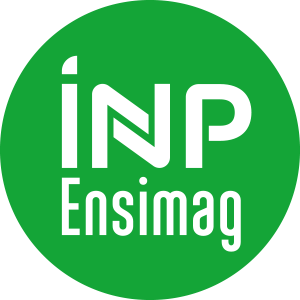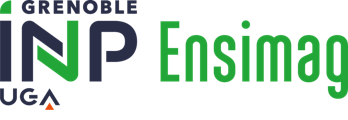Number of hours
- Lectures 30.0
- Projects -
- Tutorials 6.0
- Internship -
- Laboratory works -
- Written tests -
ECTS
ECTS 3.0
Goal(s)
Geometric modeling is an area of ??research and computer engineering common to both disciplines, applied mathematics and computer science. It focuses on digital and automated methods for creation, representation, modeling, analysis and acquisition of 3D geometric shapes.
Applications of geometric modeling cover a wide range of areas: CAD / CAM, industrial design, virtual sculpture, surface reconstruction, simulation, animation, video games, scientific visualization, medical imaging, multimedia, 3D content creation.
This course presents a large set of models and algorithms for the representation, modeling and animation of 3D shapes used in geometric design, computer graphics and the applications mentioned above.
he course presents models and algorithms for surface description, which are commonly used in Computer Aided Geometric Design and in Computer Graphics.
Stefanie HAHMANN
Content(s)
I. Part 1 (POLYGONAL GEOMETRY PROCESSING)
1. Computational Geometry (Definitions, Triangulations, surface meshes, Delaunay, Voronoi diagrams).
2. Data structures
3. Discrete differential Geometry
4. Smoothing
5. Parametrization, Remeshing
6. Simplification
7. Deformation
8. Reconstruction of surfaces
II. Part 2 (SURFACE MODELS)
1. Differential geometry: parametric curves and surfaces, curvature, geometric invariants, fundamental forms.
2. Triangulations and meshes: Delaunay triangulation, Voronoï diagram, meshes, mesh implication,
B-rep data structures.
3. Spline surfaces: Bezier and B-spline tensor product and triangular patches, algorithms De Casteljau and
De Boor, barycentric coordinates, derivatives, continuity.
4. Coons patches.
5. Subdivision surfaces: Catmul-Clark, Butterfly and Loop's scheme.
6. Surfaces of arbitrary topology: geometric continuity, interpolation of triangular surface meshes.
7. Multiresolution curves and surfaces: B-spline wavelets, multi resolution analysis, level of detail
edition, hierarchical models.
Geometric Modeling ENSIMAG 2nd year.
Evaluation : 20% of TP notés and 80% of Projet (rendu du code et des résultats) + rapport écrit + soutenance (15 min)
Resit : 20% of TP notés (reported score) and 80% of Projet (rendu du code et des résultats) + rapport écrit (NC)
Personal work on computer and written report (P1) and 1 exercice (TP).
the same personal work (P2) has to be performed for the SESSION NORMALE (N1) and for the SECOND SESSION (N2) of exams. Contact the professor in this case.
N1 = (4*P1 + TP)/5
N2 = (4*P2 + TP)/5
The course exists in the following branches:
- Curriculum - Math. Modelling, Image & Simulation - Semester 9
Course ID : 5MMMS
Course language(s): 
The course is attached to the following structures:
- Team Image Vision Interaction Multimedia Bioinfo
You can find this course among all other courses.
- M. Botsch, L. Kobbelt, M. Pauly, P. Alliez, B. Lévy: Polygon Mesh Processing, CRC Press, 2010
- G. Farin: Curves and Surfaces for CAGD, a practical guide, Academic Press, 1997
- J. Hoschek, D. Lasser: Fundamentals of Computer Aided Geometric Design, AK Peters, 1993
- E. Cohen, R. Riesenfeld, G. Elber: Geometric Modeling with Splines, AK Peters, 2001
- JD. Boissonnat, M. Yvinec: Géométrie Algorithmique, Ediscience, 1995
- M. Do Carmo: Differentiel Geometry of curves and Surfaces, Prentice Hall, 1976
- SIGGRAPH2000 Course Notes on "Subdivision for Modeling and Animation"
- SIGGRAPH1997 Course Notes on "Multiresolution Surface Modeling"



